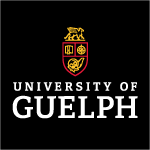Founding of the Centre for Nutrition Modelling
The Centre for Nutrition Modelling (CNM) was established in 2004 by James France on the occasion of his acceptance of a Tier I Canada Research Chair at the University of Guelph in Integrative Modelling of Biological Systems. Prior to this appointment, Jim had been the director of biomathematics groups at the University of Reading and the Institute for Grassland and Environmental Research in the UK. Jim was an early proponent of the rate:state formalism to construct differential equations for describing nutrient flows through digestive and metabolic systems of farm animals. His elegant approach found traction in the international community of animal nutrition modellers looking to describe patterns in data with mechanistic models, and Dr. France became one of the most sought-after collaborators and contributors to the field of nutrition modelling.
Early Collaborations and Research
In 2004, the Department of Animal Biosciences, named Animal and Poultry Science at the time, housed a few faculty members active in nutrition modelling. Brian McBride and Larry Milligan had already collaborated with Jim on models of protein turnover and energy expenditure in ruminant tissues, Kees de Lange had developed a dynamic nutrient flow model of energy utilization by growing pigs, John Cant was simulating nutrient transport and metabolism by the gut and mammary glands of ruminants, and Dom Bureau was modelling outcomes of feeding strategies for fish and crustacea culture.
CNM was conceived as a means to encourage greater adoption of modelling methodologies and practices among nutritionists, to share resources and expertise within and across institutions, and to announce our commitment to modelling as an important pillar of the animal sciences. The launch of CNM was celebrated with the publication of a book entitled Mathematical Modelling in Animal Nutrition, edited by James France and Ermias Kebreab. Chapters were contributed by UofG faculty members and honorary research fellows of the Centre describing their use of quantitative approaches to elucidate mechanisms underlying variation in intake, digestion, metabolism and performance of various animal species.
Expanding Modelling Activities
Modelling activities under the banner of CNM grew to encompass many facets of animal biosciences, including, but not limited to:
- egg production
- energy expenditure by indirect calorimetry
- enteric greenhouse gas production and mitigation
- enzyme assays
- feed intake
- feed ingredient and manufacturing quality
- gastric emptying and intestinal transit
- glucose-insulin dynamics
- growth of animal bodies
- imputation of missing data
- integration of metabolic pathways in organs and animals
- management of waste output from production systems
- mass balance, arteriovenous difference and isotope dilution techniques for measuring nutrient fluxes
- metabolic control analysis
- microbial growth and fermentation in the GI tract
- milk synthesis
- musculoskeletal mechanics
- nutrient response curves
- nutritive value of feed ingredients
- sustainable farming systems
Leadership and Innovation
Between 2017 and 2019, Jim France retired as director of CNM and was appointed professor emeritus of the university, Dan Tulpan joined the faculty as a professor in advanced computational biology and information technology, and Jennifer Ellis was hired as professor of animal systems biology. The directorship of CNM was passed to John Cant and Jen Ellis.
The surging popularity of machine learning and artificial intelligence and the rapidly expanding capability to collect large volumes of data on animals brought new opportunities for application of computer modelling to the animal sciences in general, and nutritional biology in particular. In 2020, Ellis et al. published a white paper on the synergy between mechanistic modelling and data-driven models for modern animal production systems in the era of big data. The paper laid out an agenda in which meta-analysis, machine learning and digital animal management have become important new activities under the umbrella of the CNM. Students at the undergraduate and graduate level can now choose from among several courses in these topic areas at the UofG and either pursue a specialization in digital animal analytics or build computer modelling competencies into their broader skillset.


